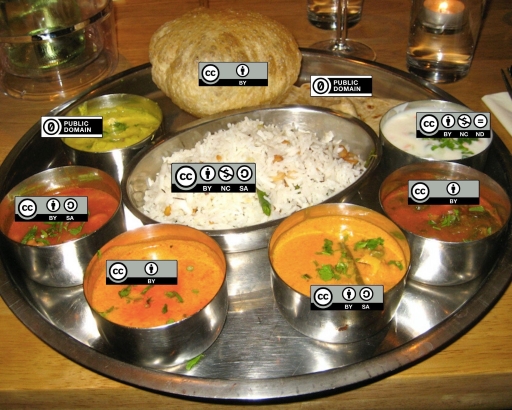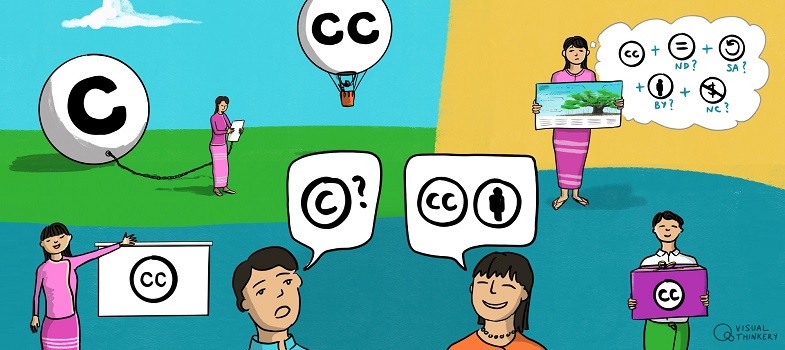Collections
Like a thali, a collection compiles different works together while keeping them organised as distinct separate objects. This means you are not blending OER together, as seen in the example of the smoothie, but keeping resources separate. This means that you can include NoDerivatives (ND) licensed resources and adapted material in a collection, because you are keeping each openly licensed resource separate. As we noted earlier, a collection is not an adaptation.
An example of a collection would be a book that compiles openly licensed essays from different sources together.

When you combine material into a collection, you may have a separate copyright of your own that you may license. However, your copyright only extends to the new contributions that you made to the work. In a collection, that is the selection and arrangement of the various works in the collection, and not the individual works themselves.
For example, you can select and arrange pre-existing poems published by others into an anthology, write an introduction, and design a cover for the collection, but your copyright and the only copyright you can license extends to your arrangement of the poems (not the poems themselves), as well as your original introduction and cover. The poems are not yours to license. You must also provide attribution and licensing information about the individual works in your collection. This gives the public the information they need to understand who created what and which license terms apply to specific content.
In the example of the thali above, there is a mix of differently licensed resources included in the collection: Public Domain, CC BY, CC BY-SA, CC BY-ND, CC BY-NC-SA and CC BY-NC-ND. What licence could we apply to this collection? Although we have included ND-licensed resources, it is important to note that these do not affect the overall licence of a collection. This is because in a collection, all resources remain discrete from each other. We might make changes to an individual resource that we include, but because it remains discrete, we will only acknowledge any changes we have made in relation to a specific piece of OER.
We also have both SA- and NC-licensed resources in the ‘thali’ collection. Because this is a collection rather than a remix, the SA restriction does not apply to how we license our collection – only to any adaptation we make of an individual, discrete resource.
However, if you incorporate non-commercial (NC) licensed material into a collection (as in the instance of the thali above), you cannot use the collection commercially and should make it clear to others that the collection should not be used commercially. This could be done in a number of different ways. For example, you could apply a Non-Commercial (NC) license to the collection. This would then clearly indicate to potential users that the collection should not be used commercially.
Alternatively, you might apply another license (e.g. CC BY) to your collection but clearly indicate that the collection contains Non-Commercial (NC) licensed resources. This could take the form of an addition to the attribution statement and disclaimer. Including this information upfront would make it very clear to users that your collection included material that could only be used in non-commercial contexts.
Let’s now take a closer look at how you should reference these types of resources.
How should I attribute adapted works?
